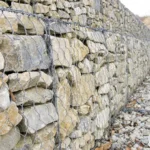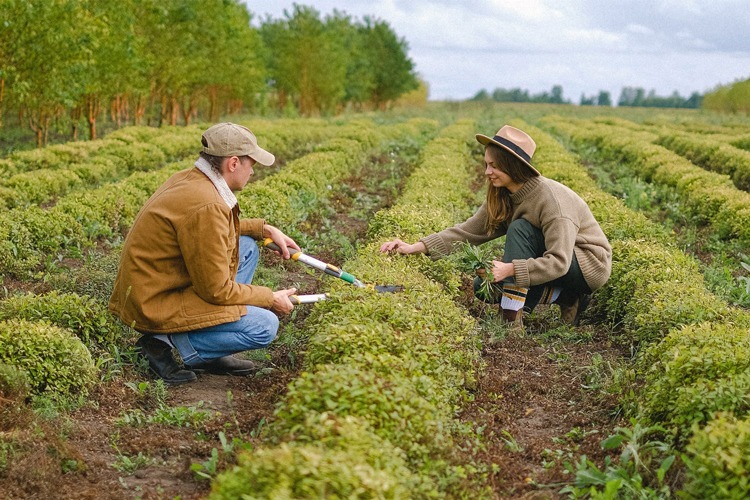The UK’s climate varies from region to region; thus, understanding your specific area’s climate is very important. The country is generally classified into hardiness zones, which guide gardeners on what plants are most likely to thrive in their local conditions. Most of Britain ranges from USDA zone 6 to 9, making it suitable for a variety of fruit trees.
Temperature
Fruit trees require certain temperature ranges to bloom and fruit successfully. For instance, apples and pears are quite hardy and can tolerate the cold, making them ideal for most British gardens. On the other hand, apricots and peaches need warmer conditions and are best suited for planting in the southern parts of the UK where milder temperatures prevail.
Frost Dates
Be aware of your local frost dates when planting fruit trees. Late or early frosts can damage blossoms, which affects the fruit production. For instance, cherries and almonds blossom early and are at risk if planted in areas where frost extends into late spring. Choosing varieties bred for resistance to frost and later blooming can mitigate some of these risks.
Soil Requirements
Soil health is another crucial factor in the success of your fruit trees. If you buy fruit trees, you must know that most prefer well-drained soil rich in organic matter. Before planting, it’s beneficial to test your soil’s pH and adjust it accordingly:
- Apples and Pears thrive in slightly acidic to neutral soil (pH 6.0 to 7.0).
- Stone fruits, such as cherries and plums, prefer a bit more acidic soil (pH 5.5 to 6.5).
If your soil is too alkaline or too acidic, you can amend it with lime or sulfur, respectively, to achieve the optimal pH. Additionally, incorporating organic compost can improve soil structure, fertility, and drainage.
Sunlight and Spacing
Sunlight is a pivotal element for fruit trees, with most requiring at least six hours of direct sunlight daily to fruit well. When planning where to plant your trees, consider the path of the sun across your garden and any potential shade from buildings or other trees.
Spacing is also important to consider:
- Dwarf trees typically need about 8-10 feet between them.
- Standard trees require about 15-20 feet of space.
Proper spacing allows for adequate air circulation and sunlight penetration, which are essential for reducing the incidence of diseases and ensuring healthy growth.
Pollination Requirements
Pollination is key to fruit production. Some fruit trees, like peaches and nectarines, are self-pollinating, meaning you only need one tree to produce fruit. Others, such as apples and pears, usually require cross-pollination from another tree of a different variety but the same fruit type. For gardens with limited space, choosing self-pollinating varieties or planting a compatible pair close together can ensure good fruit production.
Watering Needs
Young fruit trees particularly need careful watering until they establish a strong root system. They generally require regular, deep watering to encourage deep root growth. The frequency and amount depend largely on your soil type and weather conditions, but a good rule of thumb is to water deeply once a week during dry spells.
Choosing the Right Varieties
Select varieties that are known to perform well in your local conditions. Many popular fruit trees have several varieties bred for disease resistance and climate suitability:
- Apples: Varieties such as ‘Bramley’s Seedling’ and ‘Cox’s Orange Pippin’ are well-suited for the British climate, offering both hardiness and excellent flavour.
- Pears: ‘Conference’ and ‘Doyenné du Comice’ are excellent choices for both eating and cooking.
- Plums: ‘Victoria’ and ‘Damson’ plums are traditional favourites in British gardens due to their robust nature and productivity.
By choosing the right varieties, you not only enhance your garden’s success but also enjoy better taste and larger yields.
Pest and Disease Management
Finally, consider the susceptibility of different fruit trees to pests and diseases. For example, apples can be prone to scab and codling moth, while cherries are susceptible to fungal infections like silver leaf. Selecting disease-resistant varieties and implementing good garden hygiene can significantly reduce these problems.
By understanding these fundamental aspects of fruit gardening, you can make informed decisions that will set the foundation for a thriving orchard. Whether you dream of crunching on your home-grown apples or enjoying the sweet juice of freshly picked cherries, the right choices start with the right knowledge.
Planting Techniques
Proper planting is vital for the health and productivity of fruit trees. Here are some steps to ensure you give your new trees the best start:
Timing
The best time to plant fruit trees is during the dormant season, from late autumn to early spring. This timing allows the trees to establish roots in the new location before the stress of the growing season begins.
Planting Process
- Create a hole that is twice as broad as the root ball of your tree and is exactly the same depth as the root ball. This encourages the roots to expand beyond their original size.
- Position the tree so that the point where the roots meet the trunk is level with the surrounding soil. Planting too deep can lead to root rot and other complications.
- Backfill the hole with a mix of native soil and well-rotted compost or manure to provide initial nutrients.
- Water thoroughly after planting to settle the soil around the roots and eliminate any air pockets.
Support
Staking your newly planted trees can prevent wind rock and aid in the development of a strong root system. A stake should be driven into the ground at the windy side of the tree and tied loosely to allow some movement.
Maintenance Practices
Consistent care through the seasons is necessary to foster a healthy and productive garden. Here’s how to maintain your fruit trees throughout the year:
Pruning
Pruning is essential for controlling the tree’s growth, shape, and to improve the fruit’s quality. Late in the winter or early in the spring is the ideal time to start pruning. For most fruit trees, you should aim to remove any dead, diseased, or crossing branches to open up the canopy for better air circulation and sunlight penetration.
Fertilizing
Fruit trees benefit from annual fertilization to ensure they have the necessary nutrients for growth and fruit production. Apply a balanced fertilizer in early spring and consider additional applications of potassium in the summer to support fruit development.
Pest and Disease Control
Regular monitoring for signs of pests and diseases can help you act swiftly to mitigate any issues. Integrated Pest Management (IPM) strategies, such as encouraging beneficial insects, proper pruning, and the use of resistant varieties, are effective and environmentally sensitive approaches.
Mulching
Apply a layer of organic mulch, such as wood chips or straw, around the base of the trees. This helps retain moisture, suppress weeds, and improve soil quality as it decomposes.
Harvesting Your Fruit
The anticipation of the first fruits is a thrilling part of growing your own garden. Knowing when to harvest is crucial for enjoying your fruit at its best taste and texture:
- Apples can be tested by the ease of the twist from the branch. They are ripe if they peel off easily.
- Unlike other fruits, pears ripen right off the tree. Harvest when they are firm and let them ripen at room temperature.
- Plums and cherries should come off with a slight twist when fully colored and slightly soft to the touch.
Winter Care
Winter care is crucial, especially in regions with harsher climates. Here are a few tips to ensure your trees survive the winter:
- Protecting young trees from frost with horticultural fleece can prevent bark splitting and scion dieback.
- Pruning should be done with care to avoid exposing too much of the tree to elements, especially for late-winter pruning.
- Checking stakes and ties ensures that they are not damaging the tree or inhibiting growth.
By following these detailed steps for selection, planting, care, and maintenance, you will maximize the health and yield of your fruit trees. This approach not only provides a sustainable source of delicious fruit but also adds beauty and value to your home garden.

 How Realtors Can Sell Homes Faster with Staging
How Realtors Can Sell Homes Faster with Staging  How Often Should a Roof Be Replaced?
How Often Should a Roof Be Replaced?  What to Do During a Pest Control Treatment: Safety Protocols
What to Do During a Pest Control Treatment: Safety Protocols  Segmental Block vs. Poured Concrete Retaining Walls: A Comparison
Segmental Block vs. Poured Concrete Retaining Walls: A Comparison  Narra Residences Unveil Supreme Elegance in Singapore’s Dairy Farm Walk
Narra Residences Unveil Supreme Elegance in Singapore’s Dairy Farm Walk  Emergency Roof Repair in Wyoming: What to Do When Disaster Strikes
Emergency Roof Repair in Wyoming: What to Do When Disaster Strikes  Red Flags to Watch Out for When Choosing a Real Estate Agent
Red Flags to Watch Out for When Choosing a Real Estate Agent  How Site Preparation Impacts the Success of Concrete Construction
How Site Preparation Impacts the Success of Concrete Construction  Florida’s Venomous Spiders: What to Know and When to Worry
Florida’s Venomous Spiders: What to Know and When to Worry 